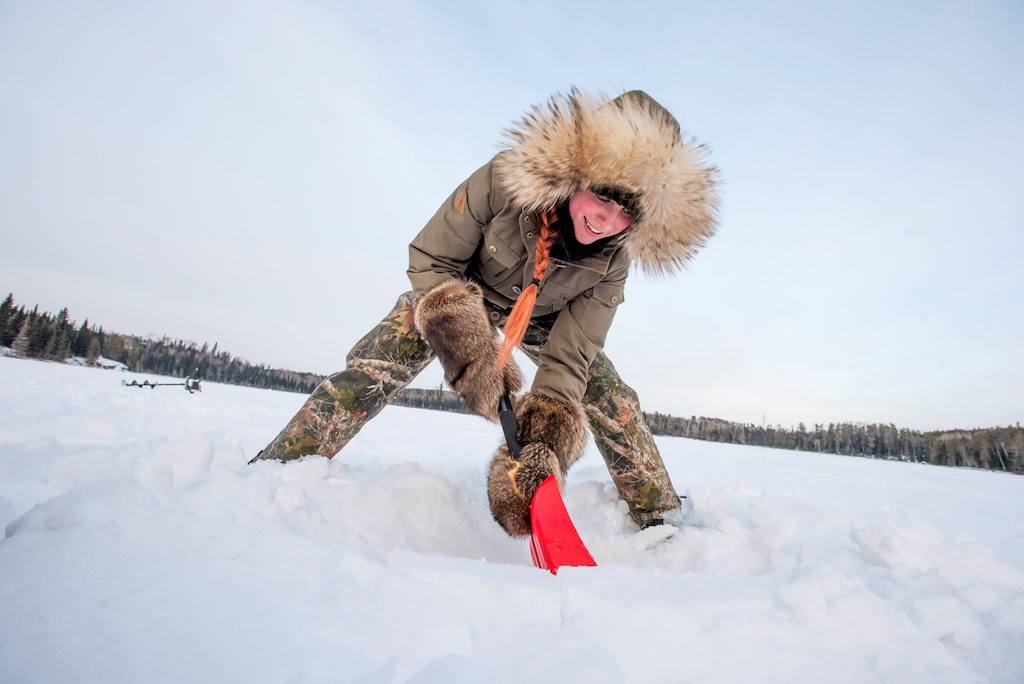July News: Invasive and Indigenous Furbearers Expanding Ranges
by Truth About Fur, voice of the North American fur tradeOur July news roundup focuses on two areas where a little more common sense could solve everyone’s problems. When wild…
Read More

Our July news roundup focuses on two areas where a little more common sense could solve everyone's problems. When wild furbearer populations grow too large, whether they're invasive or indigenous, common sense suggests we cull them and make use of the fur and meat (if they're tasty). But animal advocates want us to share space even with dangerous wildlife while calling for fur bans.
The Darwin Award for managing invasive wildlife goes to Canmore, Alberta, where a program is under way to control an explosion of rabbits. It's not that the locals don't like rabbits, but some don't like all the hungry cougars, coyotes and bears they're attracting. So far, 1,300 rabbits have been trapped and euthanised, with most going as feed to a wildlife rehab centre. But now everyone's upset: rabbit lovers, obviously, but also taxpayers who are paying $300 per rabbit caught! Plus the program's not working because the rabbits are breeding like, well, rabbits. Duh!
A fashion designer in New Zealand, where invasive rabbits cause extensive environmental harm, has a much better idea. Jane Avery is turning rabbits into fur coats under the label Lapin (French for rabbit). "If you wish for the luxury of fur, then maybe you should be making an eco-conscious choice,” says Avery, who is not so much a fur fan as a lover of her natural environment.
Don't expect rabbits to vanish from Alberta or New Zealand any time soon, but efforts to eradicate invasive species do occasionally succeed. One such case is the American mink in Scotland's Outer Hebrides. Decades after mink were released from fur farms, wildlife conservationists now believe they finally have them under control.
Indigenous wildlife can also present problems, like "urban coyotes". In a classic case of "you can't please everyone", traps were first installed in a park in Cambridge, Ontario, and have now been removed following a campaign against the "cruel" traps by Coyote Watch Canada. Said one confused resident who's afraid of the coyotes, "The city has to do something about it, but not hurting them as well because they have the right to live."
SEE ALSO: Will urban coyotes change the animal rights debate?

Beavers are also expanding their territory, onto the Alaskan tundra. “You just need to look at the map to see how well beavers recolonized the rest of North America after over-trapping," says an expert. "They are now in all the lower 48 states, and Alaska is the last standing – and it’s going to fall.” Given the radical changes beavers can bring to a landscape, the jury is still out on whether this is a good or a bad thing.
SEE ALSO: Abundant furbearers: An environmental success story.
Fur Bans Threatening
Regardless of how some furbearers are expanding their range, calls for fur bans are also spreading.
In the UK, a Parliamentary debate in June considered the possibility of banning fur imports post-Brexit. The government said no, but the anti-fur lobby have kept up a steady flow of stories to the hungry media. Grabbing headlines in July was the spurious argument that fur should be banned because a few retailers have been caught labelling it as fake. The government has rightly said this is not grounds for a ban, but it seems to be wavering, as this BBC report shows.
Also in Europe, Ireland's Green Party will be reviving its bid to have fur farming banned there. This almost happened back in 2009, but got derailed during a period of political turmoil.
Back on this side of the pond, a ban on fur sales is approaching in San Francisco, and the fur industry has threatened legal action if it goes ahead. Animal rights leaders have also announced that New York City is in their cross hairs.
On Our Blog

Last month Truth About Fur interviewed Katie Ball from Thunder Bay, Ontario. Katie says fur is in her blood and it shows! When she's not on the trapline, she's running her own fur fashion company or advocating on behalf of several outdoors associations.
We also ran an overview of the latest annual general meeting of the Fur Institute of Canada. For those not already in the know, the FIC is the country’s leader on humane trap research and furbearer conservation, and is the official trap-testing agency for the federal and provincial/territorial governments.
Odds and Ends

Let's close with some news in brief ...
In 2018, the International Fur Federation and Fur Europe commissioned a study comparing degradation of real and fake fur in a simulated landfill. Now they've released a video summarising the findings.
SEE ALSO: The Great Fur Burial.
In sealing news, a reopened tannery for sealskin in Alaska is having trouble keeping up with demand (pictured above), while on one of the remote Pribilof Islands the annual fur seal hunt was allowed to start three days early because groceries were running out.
Farmed mink production in the US fell slightly in 2017, but the total value of the harvest was up thanks to higher prices. Read the official US Department of Agriculture report and an analysis by Capital Press.
This year's winners of the Yukon Innovation Prize say they want to turn the fur industry upside down. Team Yukon Fur Real plans to buy pelts from local trappers and help artisans create fur products that can be sold to consumers.
Calling sports fans, a fur coat owned and signed by Joe Namath is up for auction! To place your bid, click here. As of August 1, there are zero bids, perhaps because the reserve price is $10,000!







